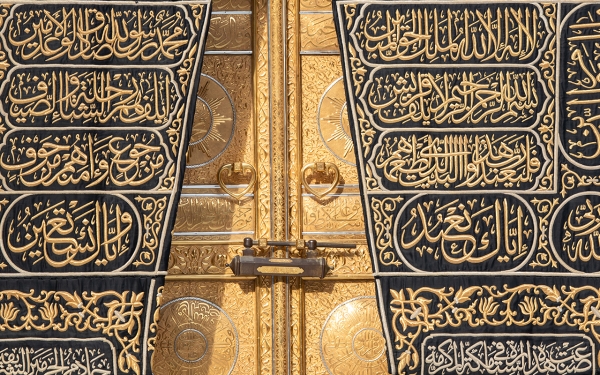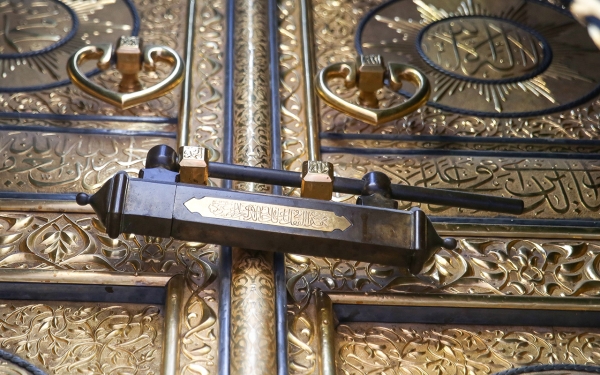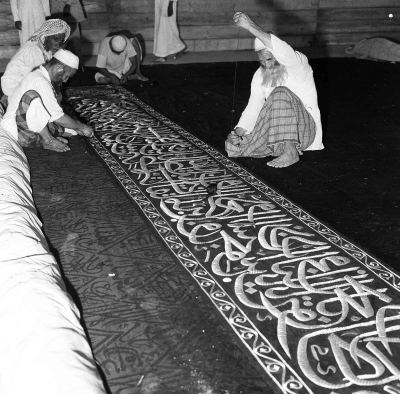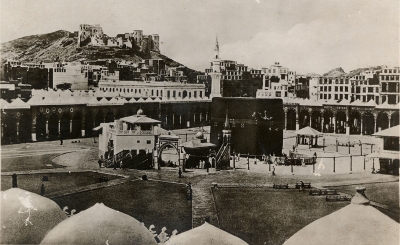

Sadanat al-Kaaba (al-Kaaba Caretaking) is the process of serving and maintaining al-Kaaba al-Musharrafa, which the Prophet Muhammed (PBUH) delegated to the Banu Talha tribe, known today as Al Shaibi. The state chooses one caretaker of al-Kaaba from the family and has one delegate. The caretaker receives the Kiswa (the cloth covering al-Kaaba) on the day of Eid al-Adha before changing it on the first day of Muharram every year.
Dimensions of the term Sadanat al-Kaaba
The term Sadanat al-Kaaba is utilized for servicing and managing the affairs of al-Kaaba. It's also known as Hijabah. Those entrusted with this service are known as caretakers, and it is their job to cover al-Kaaba from the public view. Caretakers are entrusted with the key to al-Kaaba, ensuring its opening and closure during all events related to its cleansing rituals and visitations.
History of Sadanat al-Kaaba
Following the construction of al-Kaaba, Sadanat al-Kaaba was entrusted to Prophet Ismail Bin Ibrahim, peace be upon them both, who raised its foundations with his father Ibrahim. Ismail remained near the Grand Mosque to serve it, a task which then passed to his children for generations, before being taken by force by their maternal uncles in the Jurhum tribe, who later had it taken from them by the Banu Khuzaah tribe.
Qusai Ibn Kilab, the fourth grandfather of Prophet Muhammed (PBUH) regained the role of caretaking of al-Kaaba, which was then passed to his eldest son, Abd al-Dar, who passed it to his children. It remained so until it was passed to Uthman Bin Talha, who died without a son. The task was entrusted to his cousin Shaiba Bin Uthman, whose descendants continue to fulfill this task.
Following the conquest of Makkah, Prophet Muhammed (PBUH) directed that Bani Talha would continue to take care of al-Kaaba, stating that only an oppressor would take that responsibility from them. It has remained with them ever since. The Saudi government has been diligently overseeing the affairs of the Sadanat, ensuring that all necessary arrangements are made for the upkeep of al-Kaaba al-Musharrafa. They maintain possession of the key to al-Kaaba, using it to open and close the structure during washing and visitation. Additionally, they take charge of the annual replacement of the Kiswa on the first day of Muharram.
Sadanat al-Kaaba process
Al-Kaaba al-Musharrafa's key is given to the oldest caretaker, who is the first caretaker. When al-Kaaba is opened, the senior caretakers are notified with sufficient time so that they can all attend, if possible, or some of them, to wash al-Kaaba, accompanying the caretaker or his delegate, the princes, and the guests.
Until the nineteenth century, al-Kaabah was opened on specific days of the year, a day for women and a day for men separately. It is no longer open to public access to prevent crowding, after the number of Hajj and Umrah pilgrims reached over one hundred thousand in the Mataf per hour, making it difficult to organize entrance and exit from al-Kaaba.
Replacing the kiswa on the first day of Muharram
On July 4, 2022, a royal decree was issued instructing that al-Kaaba al-Musharrafa's Kiswa should be handed over to the senior caretaker of al-Kaaba on Eid al-Adha, which aligns with the tenth day of Dhu al-Hijjah, and the annual replacement of the Kiswa should take place on the first day of Muharram, after it was previously replaced on the morning of Arafat every year.
Related quizzes


